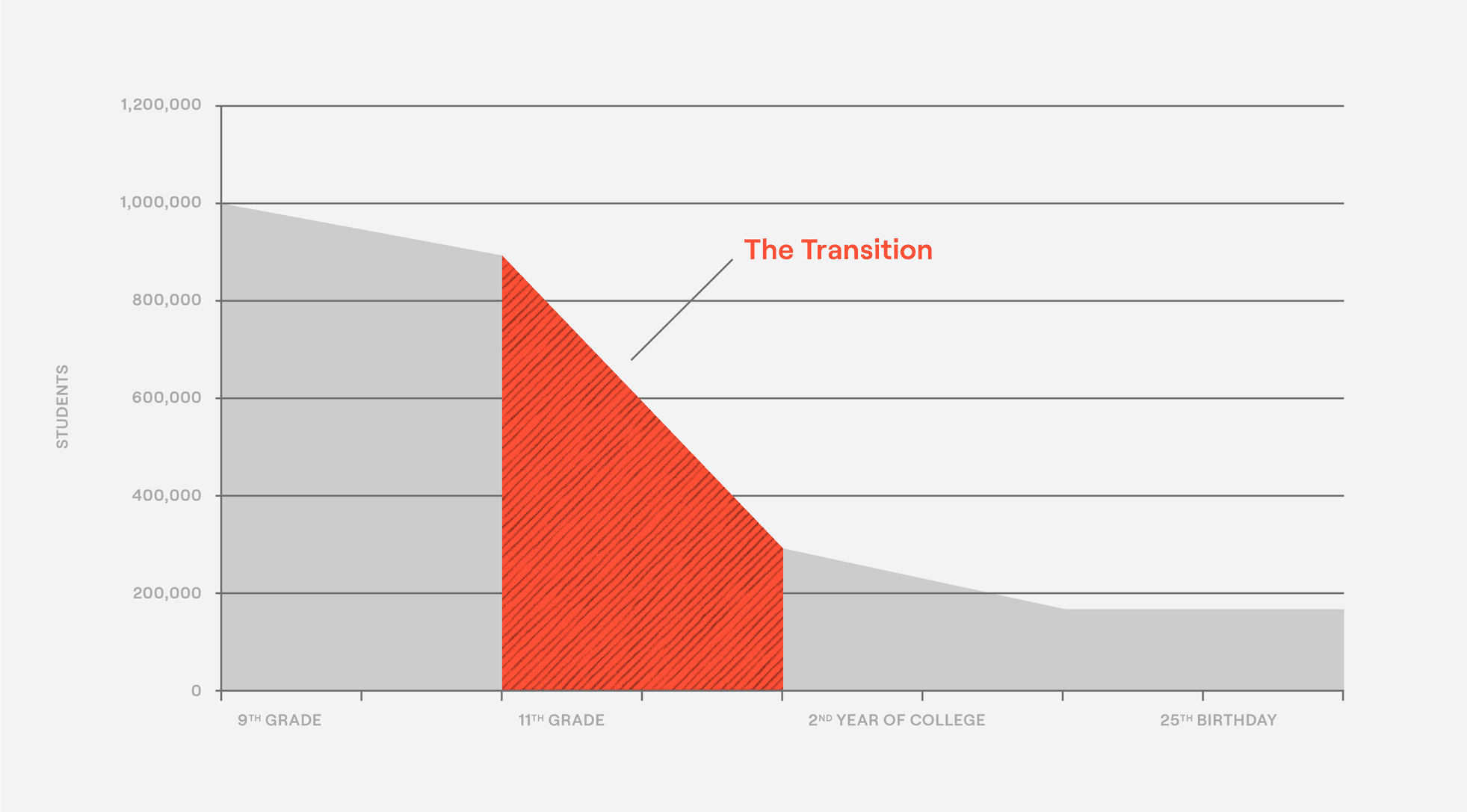Finding Your Best Postsecondary Fit
Sifting through postsecondary options can be overwhelming for students. The Quality Enrollment Framework from OneGoal supports students in narrowing these options into a shortened “best fit” list.
Students from low- and high-income communities aspire to earn a postsecondary degree or credential at similar rates. However, too many students are left to confront economic, academic, and social barriers that make it almost impossible to achieve their greatest postsecondary aspirations.


A closer look at the opportunity gap shows the vast majority of students who do not complete their postsecondary education are pushed out of the system between the final two years of high school and first year of a postsecondary program. This remains one of our nation’s most complex and critical injustices, and has persisted despite decades of work and millions invested.

“The evidence from the labor market is clear: The U.S. will need millions more college graduates in the years and decades ahead. The problem is that the obstacles we’ve placed in the way of many students—especially those growing up in families without significant financial resources—can sometimes seem too daunting to overcome.”
The growing national attention to the opportunity gap crisis presents a unique opportunity for bold systemic change. Now is the time to explore high-impact, low-cost solutions that address the institutional and system-level barriers to student success, like our OneGoal Program and our OneGoal Leadership Network. After 15 years of providing services to communities across the country, we know these solutions work.
Sifting through postsecondary options can be overwhelming for students. The Quality Enrollment Framework from OneGoal supports students in narrowing these options into a shortened “best fit” list.
OneGoal spoke with Amanda Ringfelt and Jeffrey Riley of Joliet Central High School about the school’s postsecondary advising for students.
Students like OneGoal Fellow Makayla Ransom are pursuing careers in tech, health care, cosmetology, or other skilled trade as postsecondary alternatives to two- and four-year college.